‘He belongs in the pit of hell’
By Brian E. Muhammad -Contributing Writer- | Last updated: Dec 13, 2016 - 2:11:24 PMWhat's your opinion on this article?
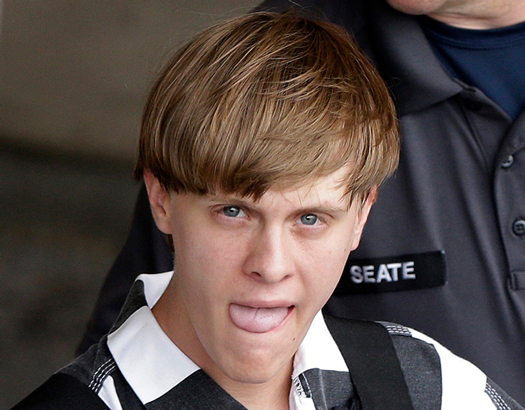
In this June 18, 2015 file photo, Charleston, S.C., shooting suspect Dylann Storm Roof is escorted from the Cleveland County Courthouse in Shelby, N.C. Roof is accused of killing nine people inside Emanuel African Methodist Episcopal Church in Charleston on June 17. He showed no remorse and laughed during a videotaped confession. He also had a list of Black churches, apparent potential targets, in his car, said authorities. Photo: AP/Wide World photos
|
The emotional, heart-wrenching trial of alleged Charleston killer
COLUMBIA, S.C.—The Federal death penalty trial of Dylann Roof, the accused killer in the Charleston, South Carolina church massacre got off to an emotional start as the court heard heart-wrenching testimony from a survivor of the brutal attack. Federal Bureau of Investigation agents, North and South Carolina law enforcement agents and investigators testified in the opening days. The trial began December 7.
The brutal nature of how the June 17, 2015 killing was carried out by the avowed White supremacist was described in detail at times and had jurors, lawyers and observers in tears as survivor Felicia Sanders, 58 spoke from the witness stand, according to a local television reporter inside the court room.
Roof is on trial for 33 federal counts that include hate crimes, in the shootings of nine Black parishioners during a Bible study at Emanuel AME Church.
Ms. Sanders recalled the shooting began after the Bible study class was complete and everyone stood, closed their eyes and began prayer. She heard a loud bang and looked up and saw the visitor they allowed into their sanctuary with his weapon in hand.
“I screamed ‘he had a gun,’” she said. But by that time, Rev. Clemente Pinckney the 41-year-old pastor and State Senator was already shot. In the chaos and pandemonium, her son was hit soon afterward and it kept going.
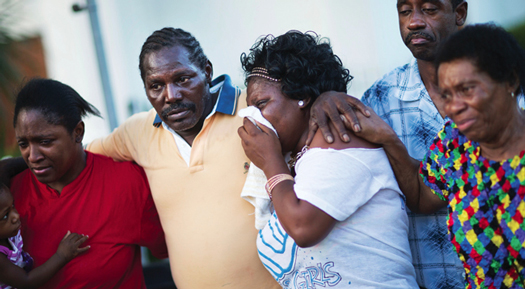
Gary and Aurelia Washington, center left and right, the son and granddaughter of Ethel Lance who died in the shooting, leave a sidewalk memorial in front of Emanuel AME Church comforted by fellow family members, June 18, 2015, in Charleston, S.C.
|
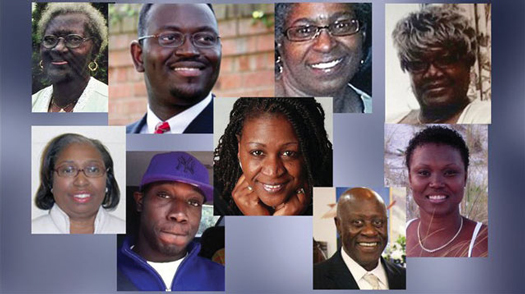
A collage of the nine victims of the Emanuel AME Church shooting. Clockwise from top left: Susie Jackson, 87; the Honorable Rev. Clementa Pinkney, 41; Myra Thompson, 59; Ethel Lance, 70; Rev. Sharonda Coleman-Singleton, 45; Rev. Daniel Simmons, Sr., 74; Rev. DePayne Middleton-Doctor, 49; Tywanza Sanders, 26 and Cynthia Hurd, 54.
|
Ms. Sanders lost her 26-year-old son, Tywanza who made an effort to stop the actions of Mr. Roof who used a Glock .45 caliber pistol he purchased months earlier according to records. Federal prosecutors said it was a calculated and planned crime against Black people.
“I watched my son come into this world and I watched my son leave this world,” she said before becoming so distraught that U.S. District Judge Richard Gergel called a recess.
Ms. Sanders told the jurors about the terror of sheltering her granddaughter, another survivor, under a table while witnessing her son and 87-year old-aunt, Susie Jackson murdered.
Ms. Sanders said that Mr. Roof sat at the defense table, never looking up—the same demeanor—he had that night. “He just sits there the whole time. Evil, evil, evil as can be,” she said.
Mr. Roof’s trial is the second high profile trial taking place in Charleston—the other was the recently ended state murder case of former North Charleston police officer Michael Slager for killing Black motorist Walter Scott in April 2015. His case ended in a hung jury and mistrial.
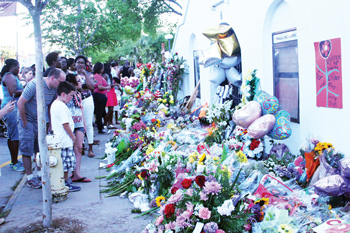
A makeshift memorial in honor of ‘The Emanuel Nine.’ Photo: Andrea Muhammad
|
Others say there is a culture of fear of Whites by some segments of the Black community like the clergy class who are comfortable as voices of containment against Black anger as was seen in the lackluster response in the streets to the mistrial verdict in the Slager case.
Black leaders who capitulate have to take some responsibility for the current state of Charleston and the conditions of Blacks and the disenfranchised said local activists.
“The masses are not going to listen to the buffer or the sellout leadership anymore; they have lost their power … God has silenced their voices,” stated Student Minister DeAndre Muhammad, the Charleston Representative of the Nation of Islam. There is another power that’s controlling the masses that neither the misleaders nor the enemy can control, he said. Among the grassroots people and progressive leadership, he explained, there is a posture of high alert with a careful watchful eye on the two cases and their ultimate outcomes.
James Johnson of the National Action Network said he is confident about the outcome of the Roof trial, however he expressed concern about the increase of assaults and aggression from White hate groups and their sense of being emboldened by the current political climate in the country. The trial is taking place during a volatile time for race relations that are exacerbated by the vitriolic sentiment of some Whites since the election of Donald Trump and the hardliner government he is organizing.
“My problem with the whole thing is that there’s more Dylann Roofs out there and with the election of Donald Trump it’s actually bringing them out,” Mr. Johnson said.
“Black folks just have to be more mindful,” Mr. Johnson added. He agrees it is pretty much an open and shut case because of the preponderance of evidence, like the videotaped confession and the church surveillance video capturing Mr. Roof’s entrance and exit with weapon in hand. The trial is, “going to take its course,” he said.
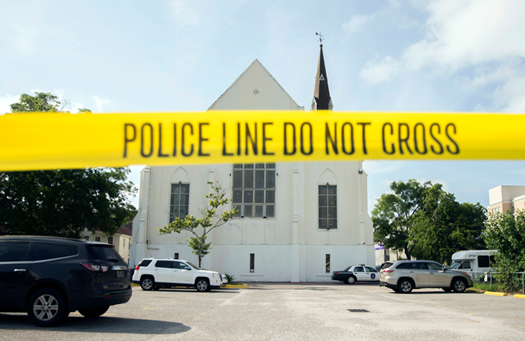
In this June 19, 2015 file photo, police tape surrounds the parking lot behind the AME Emanuel Church as FBI forensic experts work the crime scene, in Charleston, S.C. Attorneys for the man charged with killing nine people at a Charleston church are challenging federal prosecutors’ intention to seek the death penalty against him.
|
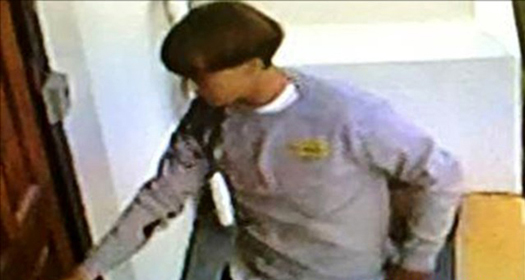
Dylann Roof caught on security camera; accused killer in Charleston church shooting. Photo: MGN Online
|
At a certain point during the trial, Mr. Roof’s attorney David Bruck called for the judge to declare a mistrial after Ms. Sander’s testimony arguing it was inappropriate because it seemed to contain a statement on what Roof’s sentence should be, which Judge Gergel dismissed.
Attorney Bruck asked her on cross-examination if she recalled Mr. Roof saying anything in the aftermath of the shootings.
“He said he was going to kill himself,” she said. “I was counting on that. There’s no place on Earth for him other than the pit of hell.”
Judge Gergel said he interpreted Ms. Sanders’ testimony as “a religious comment.” He instructed jurors that any decision on guilt or a sentence is up to the jury—not the attorneys or witnesses in the case.
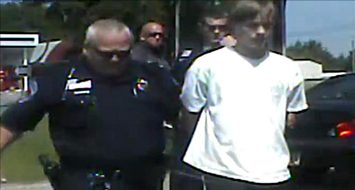
Dash cam footage showing N.C. police arresting Charleston church shooter Dylann Roof. Photo: MGN Online
|
“He pulled the trigger on that Glock .45 more than 70 times that night. More than 60 times he hit parishioners,” Assistant U.S. Attorney Jay Richardson told jurors during his opening statement.
“He seemed to them to be harmless. Little did they know what a cold and hateful heart he had,” Attorney Richardson said.
What is seen as an “open and shut” case because of Mr. Roof’s confession of guilt; the trial provides the evidence for the federal jury to decide if his sentence will be death or life imprisonment.
The case has garnered wide interest because of the racial overtone involved with the accused and the victims. The level of carnage Mr. Roof left in the basement of Mother Emanuel AME church was incomparable to anything law enforcement previously saw according to several police who testified on the opening day.
According the FBI confession video and the federal indictment against Mr. Roof, his intention was to seek retribution for perceived wrongs he believed Blacks committed against White people. He anticipated increased racial tensions across the nation in reaction to such an overt and shocking attack on a Black church.
“Defendant Dylann Storm Roof decided to attack African-Americans because of their race. He further decided to attack African-American worshipers in an African-American church In order to make his attack more notorious,” the federal indictment read in part.
“Mother Emanuel is the oldest Black church in the south,” said Mark Spurell, a Charleston resident. He told The Final Call his personal opinion is that Mr. Roof also considered the exact date and place because of the church connection to Denmark Vesey.
“People have said the date he killed those people was used because one of its founders was Denmark Vesey who planned a slave rebellion on that same date in 1822,” he shared. Mr. Vesey and others with him were accused, tried and hung for the planned move against the establishment.

Jasmine Smells, left, and Shanequa Rivers, both of Charleston, S.C., watch a video feed of Dylann Roof appearing before a judge at his bond hearing inside a viewing room at the Centralized Bond Hearing Court, June 19, 2015, in North Charleston, S.C. Roof, who faces nine counts of murder, appeared by video from the county jail, looking somber in a striped jumpsuit and speaking only briefly in response to the judge's questions.
|
The Post and Courier reported on his confession played in the court: Mr. Roof said he chose Emanuel AME in Charleston because it had a predominately Black membership and historical significance.
He also said during his confession that a race war would be “pretty terrible” and “sort of unrealistic.” Perhaps, he said, a better answer would be a return to racial segregation. He also considered himself more of a “White nationalist” saying further the White race was superior to others because “we invented a lot more things than them.”
Court papers stated that Mr. Roof, an admitted White supremacist posted thoughts and pictures depicting himself as a White supremacist replete with the Glock gun, Confederate flag and contempt for Black people on a website lastrhodesian.com which is no longer available for viewing.
The church slayings took place a little more than two months after the Walter Scott killing, and Charleston has stayed mostly calm, unlike other cities where police shootings and perceived racial injustice has rocked communities.
INSIDE STORIES AND REVIEWS
-
-
About Harriett ... and the Negro Hollywood Road Show
By Rabiah Muhammad, Guest Columnist » Full Story -
Skepticism greets Jay-Z, NFL talk of inspiring change
By Bryan 18X Crawford and Richard B. Muhammad The Final Call Newspaper @TheFinalCall » Full Story -
The painful problem of Black girls and suicide
By Charlene Muhammad -National Correspondent- » Full Story -
Exploitation of Innocence - Report: Perceptions, policies hurting Black girls
By Charlene Muhammad -National Correspondent- » Full Story -
Big Ballin: Big ideas fuel a father’s Big Baller Brand and brash business sense
By Bryan Crawford -Contributing Writer- » Full Story






 Click Here Stay Connected!
Click Here Stay Connected!








